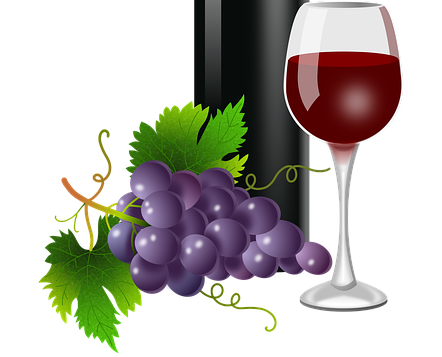Not all wines are the same. Many connoisseurs have settled on a certain type of wine – preferring red wines, rosé wines or white wines. Those who have been enjoying a glass of wine every now and then in the evening for years – even according to the opinion of many doctors – do no harm. However, tastes in wine sometimes diverge widely. This drifting apart of tastes in wine is not only noticeable within the varieties of red wine, rosé and white wine. There are also sweet, semi-dry and dry wines within the varieties. And it goes even further. Because within the sweet, semi-dry and dry wines there are not only differences in quality, but also differences in taste. Wine connoisseurs can even taste the subtleties of the soil on which the vines that have borne the grapes from which the wine they are tasting was pressed are grown. At the same time, many think that at some point it is time to discover new types of wine. For example, confirmed wine connoisseurs are quite willing to try a good white wine. Pinot Blanc is particularly suitable for this, even though it is not one of the most popular wines in the world.
What distinguishes Pinot Blanc
Pinot Blanc has many names, such as Weißer Burgunder (White Burgundy), Pinot Blanc (as it is called in France) and Pinot Bianco (as it is called in Italy). Pinot blanc has been vinified since the 14th century. The reason why this white wine is called Burgundy is that this type of white wine or the Pinot varieties were first cultivated in the area between Lake Geneva in what is now Switzerland and the Rhône valley in what is now France. In the process, Pinot blanc was created on the basis of a mutation from Pinot gris. And this grape variety has probably been around for 2,000 years. Today, the Swiss canton of Valais is considered the place of origin of the traditional grape variety. Later – in the Middle Ages – the grape variety was brought to the Rheingau by the Cistercian Order. And from here, the grape variety was spread all over Europe. The grape variety probably arrived in France in the early 19th century. It was first mentioned in 1895.
Until the middle of the 20th century, Pinot blanc and Chardonnay were not kept apart in vineyards because of their great similarity and were cultivated together. Chardonnay vines, however, ripen earlier and are less susceptible to botrytis. White Burgundy, on the other hand, belongs to the medium-late grape varieties. White Burgundy vines can only be reliably distinguished from Blue Burgundy and Ruländer at the beginning of the ripening phase or through the colour change of the berries. The grape variety causes very few problems in the vineyards. However, the grape variety is not suitable for soils that are too dry and light. The grapes are very dense and can be thinned out very well with gibberellic acid (GA3). However, the grape variety has only a medium winter frost resistance. This means that Pinot blanc has high site requirements so that a high must weight and good quality can be achieved. The soils must have sufficient water storage capacity and require a higher lime content. Ideally, the soil should be moderately heavy and the site warm and less frosty. Rocky soils and sandy soils are rather unsuitable.
Typical for Pinot Blanc is its greenish-yellow colour. Depending on the winegrower, the wine is bottled in a white bottle or in a greenish-yellow or green bottle. Depending on the growing region, Pinot Blanc can also be somewhat paler in colour and have only a light yellow tinge.
Taste
Pinot Blanc is a very full-bodied wine. The taste is reminiscent of apples and also tastes piquant and somewhat acidic, yet still rather neutral. As an old wine, Pinot Blanc reaches its highest quality and a full-bodied taste. When matured, this white wine has a taste of fresh bread. Pinot blanc from the more southern growing regions lacks a little acidity. Pinot Blanc is available as dry and powerful bottlings that have a slightly nutty taste. The aroma of a Pinot Blanc is delicate. Due to its fresh acidity and fine fruity taste, Pinot Blanc is an ideal menu wine. The lighter summer wines are also very suitable for simply drinking a glass with friends on the terrace in the evening.
What does Pinot Blanc go with?
Pinot Blanc harmonises very well with light meat. This means that such a good white wine should not be missing with delicious turkey or crispy chicken. White Burgundy is also a very good companion to lamb dishes. It doesn’t matter whether the meat is roasted or cooked. The wine is also excellent with a spicy piece of cheese and asparagus dishes. Furthermore, Weißburgunder is also fantastic with fish and seafood. Pinot Blanc is also a great addition when baking pizza. It tastes particularly good with Frutti di Mare. And a good drop of Pinot Blanc also goes very well with young game and veal.
Well-known Pinot Blancs
Among the well-known Pinot Blanc wines is, for example, the Pinot Blanc from the Zähringer winery. This wine belongs to the dry white wines, has an alcohol content of 13 % vol. and a residual sweetness of 2.8 g/l as well as an acidity content of 4.1 g/l.
Our tip is the Weissburgunder from Keltern
And also the Weissburgunder Alte Reben 2020 from the Winzerkeller Auggener Schäf is a full-bodied white wine with a taste of ripe apples and pears.
These were two examples of Weißburgunder from Germany. Pinot Blanc also plays quite a big role in the neighbouring countries of France and Austria as well as Switzerland. In Germany, there is a vineyard area of about 5,700 hectares and thus about 5.6 percent of the country’s total vineyard area planted with this grape. In Baden alone, around 1,600 hectares are planted with Pinot Blanc vines. Baden is thus the stronghold of Pinot Blanc in Germany. It is followed by Rheinhessen with about 1,500 hectares and the Palatinate with 1,350 hectares. In Italy, the area under Pinot Blanc vines is considerably larger with 17,000 hectares. Very important in Europe for this grape variety is the area under cultivation in Alsace. Here, the area has been steadily expanded in recent years.
Conclusion
White Burgundy has a long tradition of cultivation and can be enjoyed with many different dishes. In the glass, the wine presents itself as pale to dark yellow and has a strong body. It is definitely worth switching from a dry or sweet red wine to a somewhat more tart Pinot Blanc. It is also worth trying out the different Pinot Blanc varieties from different wine presses and then deciding which wine to drink with which dish.


Recent Comments